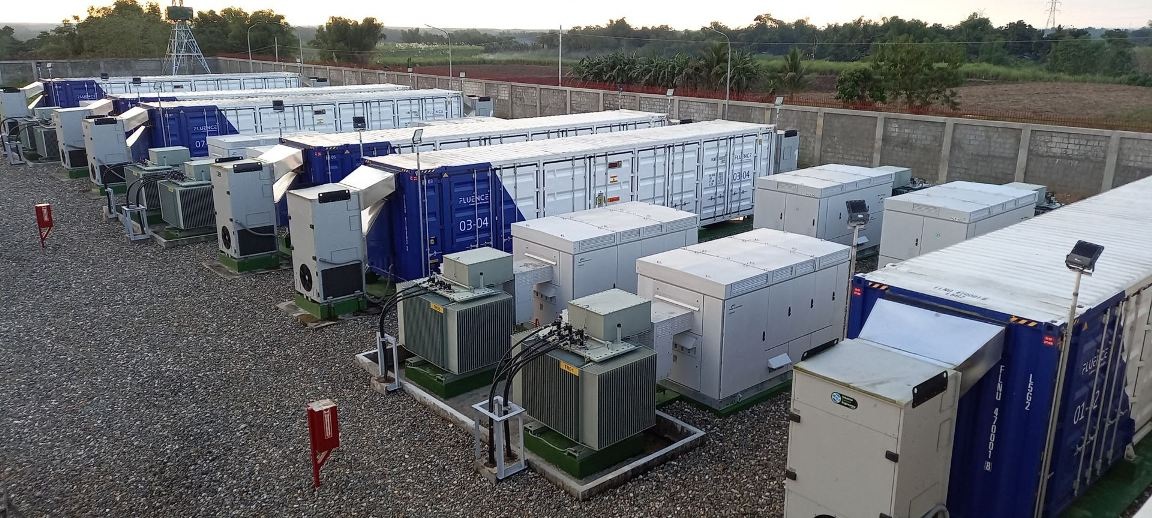
Fluence is poised to play an important role in India’s energy storage ambitions. In 2019, Fluence supplied technology to India’s first grid-scale battery-based energy storage system, and now, it has teamed up with ReNew Power with the overall objective of supporting India’s energy transition. In this exclusive interview, we have Achal Sondhi, Vice President – Market Growth, APAC at Fluence, explaining the criticality of energy storage systems in India’s emerging landscape. Sondhi asserts that India’s massive plans of renewable energy generation are closely aligned to the country’s progress in the field of battery-based energy storage systems. An interview by Venugopal Pillai.
Let us start with a corporate question. We understand that Fluence no longer projects itself as a joint venture between Siemens and AES. Tell us more.
While Fluence was formed as a JV between two energy industry powerhouses, Siemens and The AES Corporation, we went public in October 2021. As an independent, publicly traded company, we maintain strong relationships with both Siemens and AES.
Fluence supplied a 10-MW storage project to Tata Power Delhi Distribution Ltd (TPDDL) a couple of years ago. How is this installation faring?
The battery-based energy storage system (BESS) has been operating since it was connected to the TPDDL network in North Delhi at the 11kV level in February 2019. Its use case has been both for frequency support and energy arbitrage.
During high peak prices, as we have seen in India over the last two years, the system was cycled a lot more as there were large opportunities to support the price spikes in the market. The installation sets the highest standard in safety. We cannot comment on commercials as that is confidential with our customer.
“The need for energy storage systems within the distribution network is immense.”
Does Fluence expect more deals, especially with private power distribution utilities, for similar energy storage projects?
Absolutely! The need within the distribution networks is immense, both for supporting grid security and for supporting peak load for which discoms are paying approximately 4x of their average power purchase cost (Rs.4 per kwh –Rs.5 per kwh). Frequency support, market arbitrage, energy shifting, and renewable smoothening — all these applications from energy storage will provide best advantage to distribution utilities.
“The broad objective of our JV with ReNew Power is to support India’s energy transition.”
Earlier this year, Fluence announced a joint venture with ReNew Power to address the energy storage market in India. What are the broad objectives that this JV seeks to achieve?
The broad objective of the JV is to enable the energy transition in India. Both partners believe that the Indian renewable energy (RE) sector has flourished in the last decade, and that battery-based energy storage will play a critical role in maximizing the value of RE.
Both partners are setting up this independent company to serve the Indian market with Fluence products and services and to ensure localization of Fluence products. Through our global experience, we have learned that relying on inexperienced assemblers or integrators could lead to project delays, budget overruns, performance issues, accelerated battery degradation, equipment damage or failure, and even unsupported warranties and bankruptcies.
We bring over 14 years of experience designing, deploying, and operating complete energy storage solutions, and we would like to see initial projects in India become benchmark projects.
When do you expect the JV to start operations?
Roughly, in Q2 or Q3 this year.
“What we need from the Government of India is certainty on projects and potentially a target that can support local manufacturing.”
Is Fluence planning to set up manufacturing operations in India, in the foreseeable future? Do you think India would benefit by locally-made products, perhaps to suit the local conditions?
Absolutely; locally made products is a real need. Local manufacturing will be a requirement as the market is expected to grow significantly; local manufacturing enables optimization and scale. We believe our imported solutions are suitable for the Indian market also, but further optimizing for local conditions, logistics and creating a local workforce that knows the industry will be critical to enabling India’s energy transition.
What we need from the Government of India is certainty on projects and potentially a target that can support local manufacturing to create a presence to deliver in the market. Peak power type contracts and ancillary service contracts are frequently seen around the world, and we foresee the same need here in India.

What is your view on the scope for renewable energy-based energy storage projects in India? Is Fluence involved in any such projects, even if they are yet in the discussion stage?
India has immense potential for solar and wind. With targets of 280 GW of solar and 140 GW of wind, we see more than 60 per cent of the projects are renewable energy-based storage projects. We already have announcements from the Ministry of Power for 13 GWh RE+Storage in Leh, 14 GWh in Khavda, Gujarat; and with tenders like NTPC Renewable Energy 3 GWh, we foresee a lot more in line.
“Creating the ecosystem and setting the benchmark is where we believe we can bring most value to the Indian energy storage market.”
India’s energy storage market is in its nascent stage. With Fluence as the key player in this place, what does role does Fluence envisage in helping India’s energy storage market mature, and eventually reach the targeted 27 GW (108 GWh, with four-hour storage) by FY2030?
We believe the market will be much larger and the need for energy storage will be, too. This will result from the flexibility required to support the load curve of Indian consumption with high RE penetration. We are building up a presence in the market, supporting delivery of storage products for the grid, and drawing on our team’s experience implementing, commissioning, and servicing projects for 14 years. Creating the ecosystem and setting the benchmark for such an operation is where we believe we can bring most value to the Indian energy storage market.
Globally, what is Fluence’s battery-based energy storage portfolio in terms of capacity and countries covered? Incidentally, is Fluence working on renewable energy-based storage projects anywhere in the world?
Fluence has deployed or contracted more than 4.25 GW of energy storage products across more than 150 sites in 30 markets worldwide and provided services for more than 2.9 GW.
Yes, Fluence has an RE-based storage project — AES Gener project (112 MW/ 560 MWh) — in Chile.
“To meet its RE goals, India will have to meet its energy storage goals.”
Fluence, as we appreciate, has played a pioneering role in India’s energy storage market. How do you see the years ahead? What are the key challenges that India is likely to face in achieving its ambitioned 27 GW of energy storage by FY2030?
India’s RE goals of 500 GW and its battery energy storage system goals are closely aligned. To meet its RE goals, India will have to meet its energy storage goals. We have already witnessed steps being taken to create the right policy direction with Competitive Bidding Guidelines for Battery Storage Projects being released by Ministry of Power. With the ACC PLI scheme, we see strengthening of the battery manufacturing segment in the near future.
However, resolving present key challenges like higher import duties, lower GST brackets, and repeating successful tenders like the SECI peak power tender would lay the foundation to achieve 27 GW by 2030.


